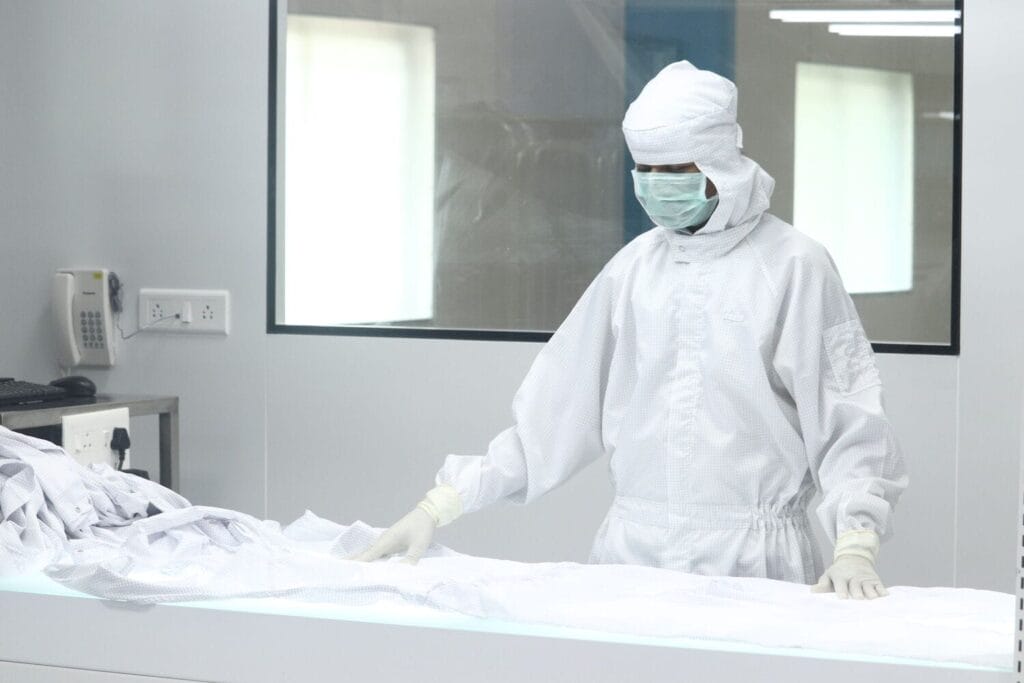
Outsourcing trends in pharmaceutical manufacturing with Shyam Khante
Shyam Khante, President of Shyam Khante & Associates is an industry veteran, well aware of game-changing trends in pharmaceutical manufacturing. In this interview with Lindström, Khante shares his thoughts on innovative trends, giving practical examples and advice, backed with more than four decades of industry expertise.
Trends and challenges facing the pharmaceutical industry
According to Shyam Khante, a major industry issue is the dropping productivity of new drugs coming into the market. One reason behind this is the ever-increasing regulatory demand. The cost has escalated to ten times while the amount of new drugs has reduced to almost less than half.
How can the industry react to this and reduce the costs of producing new drugs? There are several ways to do it. For instance, by adopting new technology, such as blockchain, cloud technology, and similar solutions. Hand in hand with this, is moving from paper to digital to speed up regulatory matters. This increases accuracy and speed while allowing faster retrieval of data. Lastly, developing contract research and implementing new, better models is a challenge, but also an opportunity to for the pharma sector.Shyam Khante, President of Shyam Khante & Associates
The bottom line, according to Shyam Khante, is looking after the customers’ best interests. At the end of the day, the customer is the one paying for the pharmaceuticals.
Innovative outsourcing trends in pharmaceutical manufacturing
Outsourcing is one of the growing trends in pharmaceutical manufacturing, allowing companies to gain specialised expertise and resources from external partners. This can be more efficient than setting up similar processes in-house, and additionally a way to reduce operational expenses and capital investments.
According to Khante, the ideal situation for a pharmaceutical company is to find an outsourcing supplier or vendor who can provide a range of services.
“We have many outsourcing needs, and complimentary services are appreciated. If I am outsourcing services related to cleanrooms, I would like the same service partner to provide many of the required cleanroom accessories,” says Shyam Khante. He continues explaining the recent trend of people wanting more and more non-core activities to be outsourced.
“If we don’t recognize this, we get left behind in the race. Potential suppliers need to keep up with these requirements, understand them, and implement solutions with them. Studying what competitors do is a good idea, and making sure to meet the expectations and requirements of other industry stakeholders.”
“We need to be first in time, right in time – and always in time,” concludes Khante, regarding keeping up with outsourcing trends in pharmaceutical manufacturing.
What to consider, when outsourcing laundry services
Smooth transition and ongoing success are the magic ingredients for a well-functioning outsourcing partnership. According to Shyam Khante, a critical factor to ensure this is the assurance of supply:
There is always a big question mark when outsourcing: how sure can we be of the security of supply? The people within the organisation will ask this. If we fail to get the supplies in time, it is not an operational failure, it is a business failure. Opportunities do not wait for you, and there are people who are waiting for you to fail and take your business opportunity. We need to make sure beyond doubt that the security of supply is not at peril at any given circumstances, at any given time. If this is not done, it is not worth considering that outsourcing option.Shyam Khante, President of Shyam Khante & Associates
Success stories from outsourcing providing competitive advantages
The pharmaceutical industry has excellent examples of outsourcing. One example is the outsourcing of the rubber plugs used in injectable vials.“Previously, we believed this could not be outsourced. The plug can be manufactured, washed, and sterilised by an external supplier and used by pharmaceutical companies. This made life easy for pharmaceutical actors,” explains Khante.
Now, considering and weighing the bottom line, people find outsourcing economical and a way of lowering costs. The major portion of equipment, which is autoclave, is very difficult in terms of validation. Outsourcing frees up bandwidth, time, and cost.
“Not many people understand the cost involved in pharmaceutical manufacturing, and there are plenty of hidden costs. Now the industry has moved to considering pre-sterilised vials. Some 10 years ago, if I suggested this, people would have asked to have my head examined to check if I really understood what I was talking about. Now we know it is possible!” shares Khante with a smile. “My job is to give drugs to patients. My patient does not care what I do as long as I am compliant with the guidelines. If I get the same process done in a cheap, efficient and better way – there is no negative consequences for the patient.”
Previously in the industry, every and any operation in industry research was “confidential” and not up for discussion. Today, mundane things are more transparent. For instance, if I develop a process that is analysed by standard methods, there is nothing confidential about it. Methods are published in the pharmacopoeia; I tell my vendor to come to study and analyse it. While I am not telling my process and my manufacturing secrets, I am just sharing my material for the vendor to analyse it and return it to me. This saves me time, and helps develop the industry.Shyam Khante, President of Shyam Khante & Associates
3 key benefits of outsourcing non-core activities
- Increased efficiency
- Deep expertise
- Regulatory compliance
The concept of outsourcing is not new. For the past 25-30 years, the industry has been talking about core competencies. “Core competencies mean that you should do what you are expected to do, not that you should try to do everything under the sun. Doing so will lead to inefficiency with respect to cost, time, and speed,” says Shyam. In other words, increased efficiency is a major benefit.
Secondly, expertise is important. “If I were to do the same job, maybe I could. However, I do not have the expertise, which I can get at a much cheaper rate from someone else. Why should I not do that?”
Third, an expert can comply with industry regulations much better. You transfer your problem to somebody else. Shyam elaborates: “You are not transferring your responsibility, but you are transferring your worries, which is a big thing! In pharmaceutical operations, dealing with regulatory non-compliance is a big issue, and outsourcing is a widely accepted option to remove the risk of not complying. Believe me, your competitor is doing the same thing. If you don’t, you will be left behind. The choice is yours.”
Guidelines for choosing an external textile provider
Shyam Khante mentions three major things that garment manufacturers need to get right.
- Understand the regulatory obligations.
- Understanding the cost, which needs to be compatible.
- Understanding the need for efficiency in the supply chain.
“We deal with public life, public health, drugs, product contamination, and contamination of the environment, and humans. Suppliers must understand our niche industry needs,” concludes Khante.
Does it make sense to have in-house laundry services?
“My answer is a big no,” says Shyam. He explains that an in-house laundry, for example, in a cleanroom, will take away a lot of bandwidth. “It is not only the equipment; it is the cost of it, the cost of operating it, and the validation time. The estimate is that 30% of the equipment time is used solely for validation purposes. In other words, in government language, this time is of no use to you.”
Adding on to this are the human costs, operational costs, and documentation costs. “Considering all that, my very blunt answer is that the industry should avoid going into this non-core activity. The better option is to choose an external vendor to handle these needs.”
What makes a leader in pharmaceutical manufacturing
Lastly, Shyam Khante mentions two key factors that can make a pharma company the industry leader. The first one is adhering to regulatory guidelines. “They keep on adding in number, direction and spread. The speed increases in a phenomenal way. That is the largest industry challenge.”
Secondly, there is cost and speed. How can we lower the costs and increase the speed of operation? Shyam illustrates his point: “You cannot give the drug that was required yesterday, today. Decisions are made on the scientific level, on a company level, but even on political levels—this way, we strive to see that the public at large benefits.”
“At the bottom line of it, the drugs must have a human face. Medicine is not for the people who can afford it, it is for the people who need it. Things are changing at a faster rate today and we have better collaboration, but also more competition. It is driving the development and if we do not take cognizance of the factors around you, you will be out of the race.”



